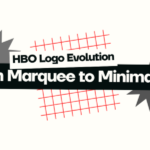Few brands in the world can claim the same kind of visual legacy as Adidas. The three stripes are not just a design, they’re a movement, a mindset, and a badge of athletic credibility. From Olympic podiums to hip-hop stages, Adidas has used its iconic stripes to stay fresh, relevant, and instantly recognizable for over 70 years.
This blog explores the evolution of the Adidas logo, how it expanded, split, simplified, and still held true to its roots. Whether you’re a sneakerhead, a designer, or a brand strategist, there’s a lot to learn from these three powerful lines.
Want your visual identity to be as versatile as Adidas’? LogoVent offers logo design services that make your brand stand out across markets and media.
Before Adidas: The Geda Origins

Before Adidas The Geda Origins 1924-31

Before Adidas Dassler 1931-38

Before Adidas Dassler 1938-49
Before Adidas was Adidas, it was part of a family business named Geda, short for Gebrüder Dassler Schuhfabrik, German for “Dassler Brothers Shoe Factory.” Founded in the 1920s by Adolf (“Adi”) Dassler and his brother Rudolf Dassler in Herzogenaurach, Germany, the company quickly gained a reputation for producing high-performance athletic shoes. Their products were worn by numerous athletes, including Jesse Owens at the 1936 Berlin Olympics.
While the brothers’ shared vision helped put Geda on the global map, tensions began to rise during World War II. Personal and political rifts eventually split the company. Rudolf went on to create Puma, while Adi Dassler rebranded his part of the business as Adidas, a fusion of his nickname “Adi” and the first three letters of “Dassler.”
This split set the stage for one of the biggest rivalries in sportswear history and laid the foundation for the birth of a visual legacy built on three bold stripes.
Rivalries can spark iconic design, see how Puma’s logo history evolved in parallel with Adidas’s identity.
1949: The Birth of the Three Stripes

1949-1950 The Birth of the Three Stripes

1950-71 Adidas

1967-Present Adidas
The Adidas story begins with founder Adi Dassler, a German shoemaker with a vision to help athletes perform better. In 1949, he registered the now-famous three stripes as a design trademark. Initially, the stripes were functional, meant to stabilize the shoe, but they quickly became the brand’s most recognizable visual asset.
These stripes weren’t part of a “logo” in the traditional sense. They lived on the sides of footwear and gradually became a signature element of all Adidas products.
Curious how logos born out of function become icons? Explore the BMW logo evolution for another example rooted in purpose.
1971: The Trefoil Logo

1971 – Present The Trefoil Logo
As Adidas expanded beyond shoes into apparel and global distribution, it needed a corporate logo that captured the brand’s identity. Enter the Trefoil logo, three leaf-like shapes formed by stripes, introduced in 1971.
The Trefoil stood for performance, diversity, and the global reach Adidas was developing. Each leaf represented a part of the world: the Americas, Europe and Africa, and Asia. It was detailed, symmetrical, and loaded with meaning.
Used mainly for lifestyle and Originals products today, the Trefoil has become a fashion staple and a nod to Adidas’ retro era.
Why the Trefoil worked:
- Introduced a symbolic dimension to the stripes.
- Balanced legacy, culture, and modernity.
- Laid the foundation for Adidas’ product segmentation.
Build a brand with layers. Our brand identity design services help businesses develop a logo strategy, not just a logo file.
1991: The Equipment Logo

1991-Present The Equipment Logo
The early ’90s brought another visual evolution with the launch of Adidas’ Performance line. This division introduced a new logo made of three slanted bars, a modernized, dynamic interpretation of the stripes.
Unlike the Trefoil, this version pointed upward, symbolizing forward motion, speed, and athletic excellence. It also marked a shift toward minimalist, motion-based branding.
This design was bolder, scalable, and better suited for a rapidly growing global audience and product line.
Lessons from this update:
- Keep brand DNA intact while adjusting for new goals.
- A modernized logo can signal innovation and performance.
Need a logo that looks great on both sneakers and screens? Check out our affordable logo design services for future-proof branding. Our design packages are within your reach.
2002–Present: Brand Architecture

2002-22 (Adidas Style; Defunct)

2005– 2021 Present Brand Architecture
Instead of choosing just one logo, Adidas made a smart move, it segmented its branding across three logos for three divisions:
- Adidas Performance – The slanted three bars.
- Adidas Originals – The classic Trefoil.
- Adidas Style (now discontinued) – A circle logo introduced briefly.
This brand architecture helped Adidas speak to different audiences, athletes, trendsetters, and lifestyle lovers, without losing coherence. The constant? Those three iconic stripes.
Why it worked:
- Provided clarity without sacrificing brand equity.
- Allowed creative freedom within a unified system.
Want more examples of clever brand segmentation? Check out our Disney logo evolution blog to see how Disney handles multiple identities.
2022: The Simplification Era

2022– Present The Simplification Era
In 2022, Adidas began rolling out refreshed typography and logo placements, minimizing detail and doubling down on simplicity. The three stripes are now often used independently of any wordmark, on shoes, websites, and even campaign visuals.
Minimal, adaptable, and instantly recognizable, the stripes now function as a standalone symbol in many use cases, proving that good branding isn’t always about doing more. Sometimes, it’s about doing less, strategically.
Planning to simplify your brand? Pair visual clarity with our incredible website design for full-spectrum presence.
The Power of the Stripes

The Power of the Stripes
Why have the three stripes lasted so long while other logos have come and gone? Because Adidas built a visual language around a simple design element and let it evolve with culture.
What Adidas teaches us about branding:
- Repetition builds recognition – The stripes are everywhere, on every product.
- One core idea, many executions – Trefoil, bars, circle, all variations of the same theme.
- Design for emotion and utility – The stripes are aesthetic and functional.
From streetwear to stadiums, Adidas continues to balance heritage and innovation with finesse.
Final Thoughts
Adidas branded a company, and they branded a shape. The three stripes are instantly recognizable across age groups, regions, and fashion categories. They’ve stretched, rotated, and multiplied, but their core message never wavered: progress, performance, and identity.
At LogoVent, we help brands achieve that kind of longevity. Whether you’re launching a bold new concept or rethinking your current logo, our professional logo design services and corporate identity design services are made to evolve with your growth. Let your design speak in every language. Contact us today and we’ll start with the right shape, and help shape your future.




